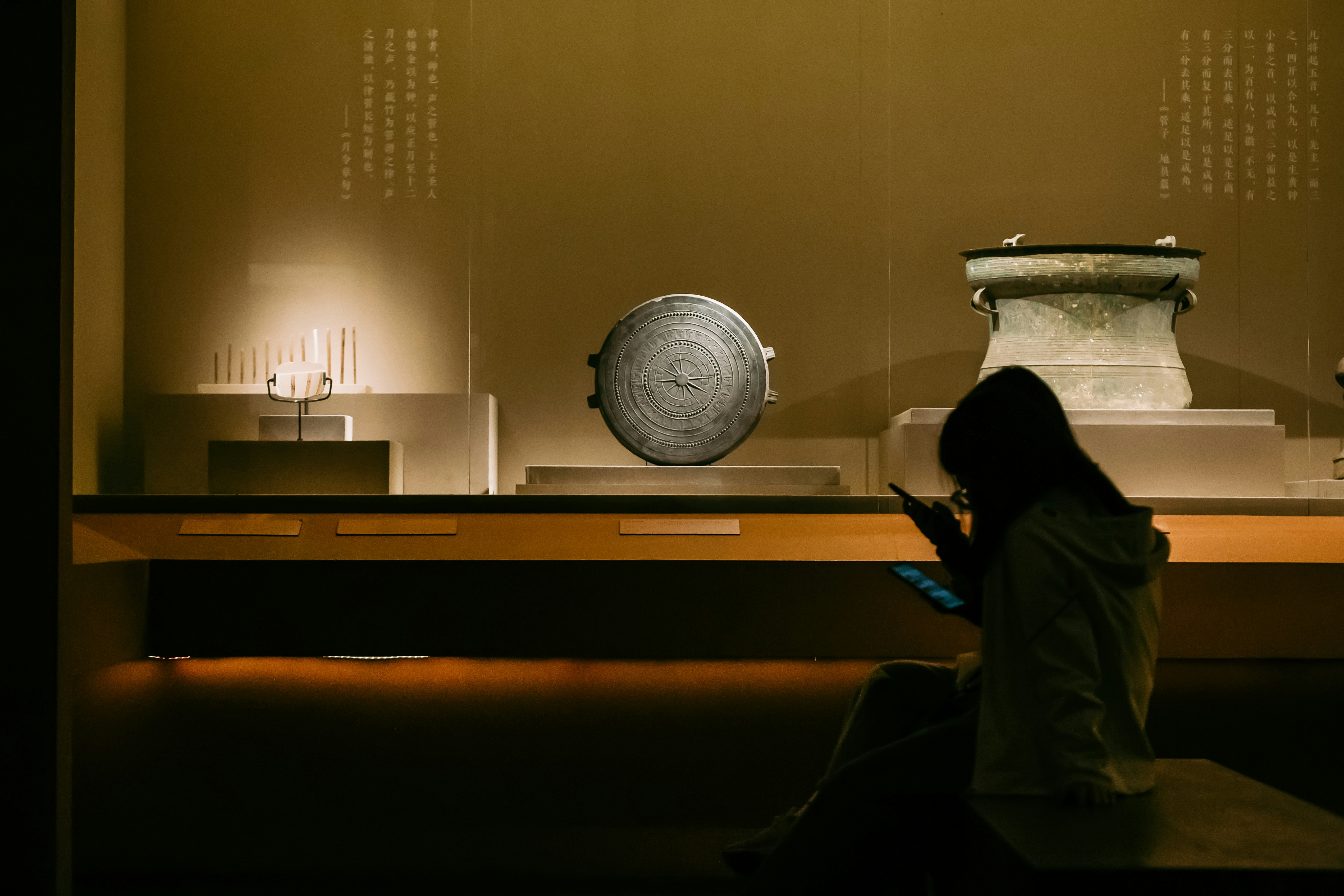The Silent Revolution: AI Noise Cancellation for Workspaces
In the cacophony of modern life, where distractions steal our focus, a silent revolution is quietly transforming the way we work—and feel. Enter AI noise cancellation technology. This innovative solution not only enhances our workspaces but also plays a crucial role in maintaining our mental health. Imagine stepping into a quiet sanctuary that can filter out the distractions of everyday office chatter, traffic sounds, and electronic beeps. How is this technology reshaping the way we engage with our work and, subconsciously, ourselves?
Understanding AI Noise Cancellation

AI noise cancellation is not merely a technical marvel; it’s a breakthrough designed to create a conducive work atmosphere. Unlike traditional noise-canceling methods that rely solely on passive blocking, AI-driven algorithms learn from the sound environment. By analyzing both background sounds and the sounds varying with speech or music, these systems can effectively filter out what isn’t necessary for the user to hear.
For example, a study by the Harvard Business Review found that office noise can lead to a 66% reduction in productivity due to distractions. AI noise cancellation systems, by effectively muting these distractions, can help maintain higher productivity levels and improve job satisfaction.
How It Works: The Technology Behind the Silence

AI noise cancellation employs sophisticated machine learning algorithms that continually adapt to the sound environment. These systems utilize microphones and sensors to capture ambient sounds, which are then processed in real-time. For instance, if a co-worker's voice or a sudden loud noise occurs, the AI system can toggle its noise-canceling features dynamically, adjusting for maximum impact.
The process delineates each sound wave, distinguishing between necessary audio (like a colleague speaking) and disruptive noise (like a printer or loud phone conversation). This means that in a bustling workspace, the technology can provide a personalized audio experience, allowing users to focus on what truly matters.
One fascinating aspect is how similar technologies are being used in fields like mental health therapy, where sound environments are tailored to reduce anxiety and foster a better therapeutic experience. As evidence mounts on the detrimental effects of sound pollution, AI's integration in this realm showcases profound implications for how we manage our environments.
The Rise of Remote Work: A Game Changer

The rise of remote work has intensified the need for efficient noise control solutions. Many individuals now find their makeshift offices at home fraught with distractions—from pets barking to family conversations. AI noise cancellation mitigates these disturbances by enveloping users in an immersive sound experience, allowing them to achieve a level of focus previously thought unattainable outside the traditional office setting.
Moreover, the emotional toll of remote work—exacerbated by distractions and isolation—can lead to burnout and decreased mental resilience. AI noise cancellation offers a newfound sanctuary for remote workers, helping to manifest a workspace that not only improves productivity but also supports mental well-being.
Mental Health and the Quiet Spaces We Create

Mental health is intrinsically tied to our environments. Research underscores how noise pollution contributes to stress, sleep disturbances, and anxiety—unwelcome companions in both our professional and personal lives. The integration of AI noise cancellation paves the way for creating tranquil spaces that allow our minds to rejuvenate.
Imagine an office that utilizes this technology, providing each employee with a personalized soundscape. Employees could eliminate distracting sounds, developing a work atmosphere conducive to creativity and productivity. This tailored experience can foster a sense of control over one’s environment, a crucial aspect of mental well-being.
According to a report from Moz, workplaces that prioritize acoustic comfort witness a marked increase in employee satisfaction and output. Simple changes made through noise cancellation technology thus serve as a testament to how improvements in workplace design can lead to happier, healthier employees.
Personalized Soundscapes: The AI Advantage

Imagine walking into a workspace where you can selectively choose what you hear. AI noise cancellation offers the unique opportunity to curate personal soundscapes. Want the gentle hum of an espresso machine and AI-generated white noise, or are you looking to block out conversations while tuning into your favorite playlist? The choice is incredibly empowering.
These personalized environments not only drive productivity but also enhance creativity. Teams collaborating on projects can do so more effectively by minimizing distractions. Soundscapes that mimic environments like bustling cafes or tranquil nature can aid in idea generation, providing stimuli that can enhance performance and innovation.
Case Studies: Real-world Applications

Globally, companies are starting to adopt this revolutionary approach to sound management in workplaces. Airlines, for instance, are equipping first-class lounges and business-specific waiting areas with AI noise cancellation to offer a calm, serene atmosphere amidst the bustling terminals. By quieting the noise, they elevate the customer experience, leading to greater satisfaction and loyalty.
Tech giants like Google and Microsoft have also begun leveraging this technology in their offices, providing employees with noise-canceling headphones and sound-proofed meeting rooms. The results speak volumes. Companies that invest in ambient environment technology often report a significant uptick in employee morale, teamwork, and overall output.
The Future of Workplaces: Embracing Silence

As technology continues to evolve, the vision of our workplaces is shifting. The ideal workspace of the future may not just be about collaboration but also about cultivating a holistic environment conducive to mental well-being. AI noise cancellation technology plays a vital role in this vision.
Companies will increasingly recognize the need for smart, adaptable environments that cater to individual employees' auditory preferences. As we move further into the 2020s, the attention to unique sound environments could well reshape organizational culture, enhancing productivity while prioritizing mental health.
Personal Reflections: Harnessing Quiet

On a personal level, the journey towards understanding and using AI noise cancellation technology has been transformative. From struggling to concentrate amidst the daily din to embracing the soothing effects of sound masking, I have found clarity and focus like never before. The impact extends beyond productivity; I find my creative juices flowing more freely in quieter environments, making connections in my work that I hadn’t seen before.
Just as a gardener carefully tends to their plants, we must also cultivate our own environment. The emergence of AI noise cancellation tools allows us not merely to escape the noise but to reclaim our mental spaces, fostering an atmosphere where creativity and productivity can thrive.
Building a Culture of Quiet

Promoting a culture of quiet within an organization transcends the implementation of technology. It necessitates cultivating awareness about the importance of auditory comfort in the workplace. Organizations can create policies encouraging periods of silence, designated quiet areas, and the use of AI noise cancellation in open workspaces.
By ensuring that employees have the tools to manage their auditory environments, leaders can create a culture that values both productivity and mental wellness. Implementing such practices is not just an investment in technology but an investment in people.
Final Thoughts: A Quiet Revolution Awaits
As we stand on the brink of a new era marked by the silent revolution of AI noise cancellation, we find ourselves faced with significant opportunities and challenges alike. The promise of this technology lies not only in enhancing productivity and workflow efficiencies but in nurturing our mental well-being amidst the hustle and bustle of our lives.
In a world filled with distractions, it’s time to embrace the quiet, to harness AI noise cancellation, and to reshape our workspaces into havens of concentration and creativity. Let us advocate for our mental health by facilitating environments that speak to our needs—both as professionals and as people.
Each small step towards enhancing our auditory experience can lead to meaningful change, and that change begins at the individual level. Explore tools that suit your needs. Whether you’re a remote worker or part of a bustling office, the potential is there, waiting to be unlocked.
To learn more about creating an environment conducive to focus, consider reading articles such as Using Virtual Reality for Mindful Respite from Screens or delve deeper into how neurofeedback devices can aid in sharpening focus. These resources complement the conversation about the evolving nature of our environments and how we engage with them.



